J. F. Penn is one of indie publishing’s mega-stars.

Recently, Mark Alpert posted a blog about The Writing Buddy and how writing can be a lonely occupation. There are few methods of getting around that situation. If you want to write fiction, it’s usually a one-man show. Fortunately for me, I have a solution—a cowriter.
One of the most frequently asked questions Lynn Sholes and I get is “How is it possible for two people to write fiction together?” The answer is, it ain’t easy. At least it 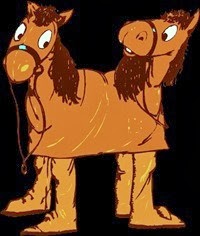 wasn’t at first. Collaboration on non-fiction is somewhat easier to understand. In general, with non-fiction, the “facts” usually already exist and the collaborators’ job is to organize them into a readable document that has a beginning, middle and end. A good outline and knowledge of the subject matter along with professional writing skills may be all the authors need.
wasn’t at first. Collaboration on non-fiction is somewhat easier to understand. In general, with non-fiction, the “facts” usually already exist and the collaborators’ job is to organize them into a readable document that has a beginning, middle and end. A good outline and knowledge of the subject matter along with professional writing skills may be all the authors need.
But with fiction, nothing exists. It’s all smoke and mirrors. Fiction is a product of an individual’s imagination. It might be inspired by actual facts or events, but only the individual has a specific vision of those events in their head. So how can two people have a similar enough vision to be able to write a novel together?
I can’t speak for the handful of other writing teams out there (including TKZ’s own PJ Parrish), but Lynn and I have managed to complete 6 thrillers together because of a number of reasons.
First, we love the same kind of books—the ones we read are like the ones we write.
Second, we have an unquestioning respect for each other’s writing skills and a deep belief that whatever one of us writes, the other can improve.
Third, we believe that there’s always a better way to write something.
Fourth, we never let our egos get in the way of a good story. This comes from spending over 10 years in a weekly writers critique group.
Fifth, we know each other’s strengths and weaknesses, and are willing to admit them.
Sixth, we agree on the same message/theme in each book.
Seventh, we believe that we are on the same level of expertise.
And last, we believe that the whole is greater than the sum of the parts.
Those points cover the mental portion. Now, how do we handle the mechanics of the job? We talk, and talk, and talk. Once a day we conference call, brainstorm, tell and retell each other the story. Our two favorite words are: What if? Whether it’s global plot points or an individual scene or character motivation, we keep telling each other the story until that little imaginary movie in our minds becomes as in-sync as possible. Then one of us will declare they have a “handle” on the scene or character or chapter, enough of which to create the first draft.
We write very slowly because each chapter must go back and forth many times for revision. Years ago, when we first started, everyone could tell who wrote what as we tried to write our first book. It took three years of hard work before we melted our voices together. Now, because the process goes through so many revisions, even I can’t always remember what I wrote and what she wrote. I rely on my co-writer so much that I’ve come to wonder how individuals can possibly write a book on their own.
There are a number of advantages and disadvantages to collaborating. A disadvantage is that you split any money you make. So you’ll always make half of what you could as a single author. And like any relationship, there is always a chance of a falling out. And something could happen where an ego can become inflated and affect the process.
One of the pluses is that we never experience writer’s block. One of us will always have an idea on how to get out of a jam or move the story forward. And unlike our spouses, family, friends, trusted beta readers, and everyone else, a co-writer has an intimate, vested interest in the success of the story that no one else could have.
Lynn and I are approaching the mid-point of our seventh thriller together (THE SHIELD, the follow-up to THE BLADE). I’ve found that creating the first draft of a chapter is just as exciting as getting a new chapter from her and seeing where the story has gone. I guess the whole thing boils down to trust. Trust in each other and in the goals we both want to achieve with the story and with our careers.
One last note: I haven’t seen Lynn in person in over 5 years since we live hundreds of miles apart. That seems to be something that mystifies everyone.
So, now that you know how we write together, do you think you could ever collaborate on a novel? Or is writing fiction too private an experience. Do you believe two heads are better than one or would you rather not have anyone sticking their nose in your work?
————–
“THE BLADE is full-throttle thriller writing.” David Morrell
By Joe Moore
I just finished the first draft of my new thriller, THE BLADE, co-written with Lynn Sholes. This is our sixth novel written together; this one coming in at a crisp 92,500 words. Now that the first pass on the manuscript is finished, the rewrite begins. As E.B. White said in THE ELEMENTS OF STYLE, “The best writing is rewriting.”
Some might ask that if the manuscript is written, why do we need to rewrite it? Remember that the writing process is made up of many layers including outlining, research, first drafts, rewriting, line editing, proofing, more editing and more proofing. One of the functions that sometimes receives the least amount of attention in discussions on writing techniques is rewriting.
There are a number of stages in the rewriting process. Starting with the completion of the first draft, they involve reading and re-reading the entire manuscript many times over and making numerous changes during each pass. It’s in the rewrite that we need to make sure our plot is seamless, our story is on track, our character development is consistent, and we didn’t leave out some major point of importance that could confuse the reader. We have to pay close attention to content. Does the story have a beginning, middle and end? Does it make sense? Is the flow of the story smooth and liquid? Do our scene and chapter transitions work? Is everything resolved at the end?
Next we need to check for clarity. This is where beta readers come in handy. If it’s not clear to them, it won’t be clear to others. We can’t assume that everyone knows what we know or understands what we understand. We have to make it clear what’s going on in our story. Suspense can never be created by confusing the reader.
Once we’ve finished this first pass searching for global plotting problems, it’s time to move on to the nuts and bolts of rewriting. Here we must tighten up our work by deleting all the extra words that don’t add to the reading experience or contribute to the story. Remember that every word counts. If a word doesn’t move the plot forward or contribute to character development, it should be deleted.
Some of the words that can be edited out are superfluous qualifiers such as “very” and “really.” This is always an area where less is more. For instance, we might describe a woman as being beautiful or being very beautiful. But when you think about it, what’s the difference? If she’s already beautiful, a word that is considered a definitive description, how can she exceed beautiful to become very beautiful? She can’t. So we search for and delete instances of “very” or “really”. They add nothing to the writing.
Next, scrutinize any word that ends in “ly”. Chances are, most adverbs can be deleted without changing the meaning of the sentence or our thought. In most cases, cutting them clarifies and makes the writing cleaner.
Next, go hunting for clichés and overused phrases. There’s an old saying that if it comes easy, it’s probably a cliché. Avoiding clichés makes for fresher writing. There’s another saying that the only person allowed to use a cliché is the first one that use it.
Overused phrases are often found at the beginning of a sentence with words like “suddenly,” “so” and “now”. I find myself guilty of doing this, but those words don’t add anything of value to our writing or yours. Delete.
The next type of editing in the rewriting process is called line editing. Line editing covers grammar and punctuation. Watch for incorrect use of the apostrophe, hyphen, dash and semicolon. Did we end all our character’s dialogs with a closed quote? Did we forget to use a question mark at the end of a question?
This also covers making sure we used the right word. Relying on our word processor’s spell checker can be dangerous since it won’t alert us to wrong words when they are spelled correctly. It takes a sharp eye to catch these types of mistakes. Once we’ve gone through the manuscript and performed a line edit, I like to have someone else check it behind us. A fresh set of eyes never hurts.
On-the-fly cut and paste editing while we were working on the first draft can get us into trouble if we weren’t paying attention. Leftover words and phrases from a previous edit or version can still be lurking around, and because all the words might be spelled correctly or the punctuation might be correct, we’ll only catch the mistake by paying close attention during the line edit phase.
The many stages making up the rewrite are vital parts of the writing process. Editing our manuscript should not be rushed or taken for granted. Familiarity breeds mistakes—we’ve read that page or chapter so many times that our eyes skim over it. And yet, there could be a mistake hiding there that we’ve missed every time because we’re bored with the old stuff and anxious to review the new.
Spend the time needed to tighten and clarify the writing until there is not one ounce of fat or bloat. And once we’ve finished the entire editing process, put the manuscript away for a reasonable period of time. Let it rest for a week or even a month if the schedule permits while working on something else. Then bring it back out into the light of day and make one more pass. It’s always surprising at what was missed.
One more piece of advice. Edit on hardcopy, not on a computer monitor. There’s something about dots of ink on the printed page that’s much less forgiving than the glow of pixels. And never be afraid to delete. Remember, less is always more.
How do you go about tackling the rewriting process? Any tips to share?
By Joe Moore
Today, Amazon has graciously chosen THE GRAIL CONSPIRACY (Midnight Ink, 2005) as their “Daily Deal”. This means that for one day only, they have reduced the price of the Kindle version to $0.99. I don’t know the 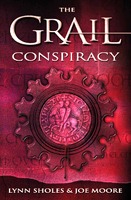 process by which they choose books for their Daily Deal, but I really appreciate it. Back on October 18, they picked my latest thriller THE PHOENIX APOSTLES, and by the end of the day, it became the #1 bestselling Kindle book on Amazon. So having 2 of my novels picked is a really big deal, and really cool. As you can imagine, I’m hoping for a repeat performance today.
process by which they choose books for their Daily Deal, but I really appreciate it. Back on October 18, they picked my latest thriller THE PHOENIX APOSTLES, and by the end of the day, it became the #1 bestselling Kindle book on Amazon. So having 2 of my novels picked is a really big deal, and really cool. As you can imagine, I’m hoping for a repeat performance today.
THE GRAIL CONSPIRACY is very special to me because it began my writing career being the first book I ever had published. And the story of how it came about is also very special.
In 1994 a friend phoned my co-writer Lynn Sholes and told her to read the article Crusade’s End? in the April issue of Discover magazine. The caller thought it had great promise as a premise for a book. The article was about Leon Decoeur, an archaeologist, working late on Christmas Eve at a dig site in Jerusalem where he uncovered an ancient cup he believed could be the Holy Grail. Preserved inside the cup was a brown residue, later determined to be human blood. Discover quoted Decoeur, "You remember that cosmologist a couple of years back who claimed he’d seen the face of God? Well, I think we’re going to see His DNA."
As all writers do, Lynn started asking What If questions. In this instance it was: what if someone used the DNA to clone Christ?
At about the same time, I was a freelance writer reviewing books for the South Florida Sun-Sentinel and other Florida newspapers. A mutual friend introduced me to Lynn. I reviewed her second novel (she was writing historical fiction at the time and eventually had 6 novels published) and we began talking about the business of writing. I joined Lynn’s local critique group where we often discussed current projects and those we envisioned in the future. The Discover article story came up repeatedly, but Lynn just didn’t feel comfortable taking on the task of making a book from it since it was outside her genre. So, even though the story intrigued everyone who heard the cloning-Christ premise, it sat dormant until I couldn’t stand the waste of a good idea any longer. One day, several years after the magazine article, I called Lynn and “threatened” her. I told her if she didn’t write that story, I would outright steal the idea and write it myself. I think that shocked her into the reality of “getting on with the rat killing!” as she likes to say. Lynn and I decided on collaboration. We spent countless hours writing a detailed, 52-page, chapter-by-chapter outline. Finally finished, we agreed we didn’t like major segments and started all over again, adding more dimension and texture.
The more research we did, the bigger the story grew. Finally, we thought the skeleton was ready for the flesh, and we began the first draft. That’s when we became acutely aware of the differences in our writing styles: her voice was lyrical, mine bold. Those two voices fought each other on the page. But we also realized our strengths: Lynn’s was character development while mine was plotting. It took a great deal of work to put our egos aside and build trust in each other before our different styles started to blend. (This is why you rarely see collaboration in writing fiction. It’s generally an impossible task.) After three years of working on our book, we felt, as did our beta readers, that our voices were blending and our strengths were paying off to the story’s advantage. When our manuscript was finally complete, we sent it off to Lynn’s agent who loved it.
Then came the bad news. Enter Dan Brown.
Now, TGC was conceived, outlined, and drafted a decade before Brown’s book, still he took all the air out of our story. Even though TGC was not the same story as THE DA VINCI CODE, it was still a “Grail” story. And there were small coincidences and idiosyncrasies in the plots, like killing someone off and making it look like an allergic reaction. So we went back to the drawing board. BTW, our working title from the beginning was CORPUS CHRISTI (Latin for the Body of Christ). When we finished, we changed it to THE ENOCHIAN PROPHECY.
We worked our way through the book again, doing more research so we could replace those close calls with THE DA VINCI CODE. And we even added a few additional twists. Then we sent it off again.
It found a home with Llewellyn Worldwide, and the book was published in 2005 as part of Llewellyn’s launch of their new mystery imprint, Midnight Ink. They wisely changed the title from THE ENOCHIAN PROPHECY, which no one knew the meaning of much less could pronounce, to THE GRAIL CONSPIRACY.
That year, it was named Book Of The Year by ForeWord Magazine, landed on a number of international bestseller lists, and was eventually translated into 24 languages.
TGC was the beginning of my writing partnership with Lynn Sholes resulting in 5 novels published: THE GRAIL CONSPIRACY, THE LAST SECRET, THE HADES PROJECT, THE 731 LEGACY, THE PHOENIX APOSTLES and the short story BAM! JUST LIKE THAT. We’re closing in on finishing the first draft of #6, the standalone thriller THE BLADE.
So what is THE GRAIL CONSPIRACY about? Here’s the website promo copy.
From a newly unearthed crusader’s tomb in Iraq to the guarded treasure vaults of the Vatican to a secret genetics lab on the banks of the Mississippi, THE GRAIL CONSPIRACY uncovers a sinister plot of ultimate revenge.
A small wooden box hidden for centuries is passed on to network correspondent Cotten Stone by a dying archaeologist. With his final breath, spoken in a language Cotten has not heard since childhood, he declares that she is "the only one who can stop the sun . . . the dawn." Unable to open the box, Cotten seeks the help of John Tyler, a noted biblical historian and Catholic priest on leave of absence from his duties but not his vows. Inside the box, they discover a cup wrapped in a cloth bearing the insignia of a powerful medieval order that professed to be the Guardians of the Grail.
Cotten is propelled into the headlines as she and John deliver the Cup to the Vatican for authentication, and she reports the story of its journey from Calvary to cable TV. But her life quickly becomes caught up in a global plot driven by an ancient sect devoted to bringing about the Second Coming. As those around her fall victim to the Grail Conspiracy, Cotten soon learns her true legacy and must question if she is stopping an abomination or is she working on the side of Evil. In the final conflict she learns why she is the only one who can stop the ultimate revenge against God by the Prince of Darkness.
If you haven’t read TGC, please take advantage of Amazon’s $0.99 Daily Deal and download a copy to your Kindle. If you’ve already read it, I hope you’ll download and enjoy it again. I’ll be forever in your debt.
—————–
This is my last post until next year since TKZ will be taking it’s annual 2-week Winter break starting December 19. Thank you for reading and commenting on my posts throughout the year. Merry Christmas and Happy New Year to you all.
By Joe Moore
A few weeks ago, my blogmate John Gilstrap, posted Best Advice Redux in which he said, “Standard book signings are to me a waste of time. Ditto book tours.” I left a comment that I agreed and could prove it was true, at least for me. So that’s the subject of today’s blog: are book signings and tours necessary? And in addition, are the marketing efforts of the publisher important if not critical?
First, let me start with a disclaimer. My comments here are my own opinion based on my personal experience. I fully expect that others will feel different, and have equally compelling reasons to believe that the opposite is true. That’s fine. But here’s what I believe:
You can have a bestselling novel and never conduct a book signing or book tour. I know because I’ve done it—more than once.
The first book I had published was THE GRAIL CONSPIRACY (2005), co-written with Lynn Sholes. It was released by Midnight Ink, a small Midwest imprint of a large and venerable house called Llewellyn Worldwide. We had modest domestic sales with TGC, earned back our advance and experienced an excellent sell-through percentage. Midnight Ink went on to publish our next 4 books including our newest, THE PHOENIX APOSTLES. I don’t know the numbers on TPA yet, but the others (THE LAST SECRET, THE HADES PROJECT, and THE 731 LEGACY) also had modest sales, earned out their advances, and had high sell-through.
Lynn and I did many book signings through the course of the first 4 novels (the Cotten Stone series). Some signings drew impressive crowds while others drew a handful of friends and family. Sometimes we would sell 60-70 copies while other times we would sell just a few. Our number of signings fell off over the years in part because we are located at different ends of the state with over 400 miles in between. We still do a few signings a year, mostly at conferences.
Now, let’s shift gears. THE GRAIL CONSPIRACY was bought by a publisher in the Netherlands (same company that publishes Dennis Lehane, Clive Cussler, John Grisham, Stephen King, and others), 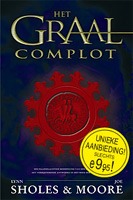 translated into Dutch and released. They bought it solely because they liked the story, not because it was a bestseller with high numbers in the U.S. In fact, TGC had no significant domestic track record. The only factor that affected the sale of the Dutch version was the efforts of the publisher to market it. Lynn and I never held a book signing in the Netherlands. We never did a book tour. In fact, to this day we have never communicated with our Dutch publisher. THE GRAIL CONSPIRACY (Het Graal Complot) spent 9 weeks on their national bestseller list and earned us more money than our domestic sales for the same book. And all we did was write the book.
translated into Dutch and released. They bought it solely because they liked the story, not because it was a bestseller with high numbers in the U.S. In fact, TGC had no significant domestic track record. The only factor that affected the sale of the Dutch version was the efforts of the publisher to market it. Lynn and I never held a book signing in the Netherlands. We never did a book tour. In fact, to this day we have never communicated with our Dutch publisher. THE GRAIL CONSPIRACY (Het Graal Complot) spent 9 weeks on their national bestseller list and earned us more money than our domestic sales for the same book. And all we did was write the book.
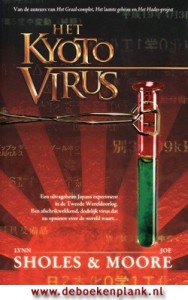 Our Dutch publisher went on to buy our next 4 thrillers. Our 4th book in the Cotten Stone series, THE 731 LEGACY (Het Kyoto Virus), also hit the bestseller list in the Netherlands and brought in more earnings than the domestic version.
Our Dutch publisher went on to buy our next 4 thrillers. Our 4th book in the Cotten Stone series, THE 731 LEGACY (Het Kyoto Virus), also hit the bestseller list in the Netherlands and brought in more earnings than the domestic version.
The same thing happened in Poland. With no track record, our Polish publisher (Grisham, Cussler, Cabot, Tolkien) promoted THE GRAIL CONSPIRACY (Spisek Graala) right onto the bestseller list where 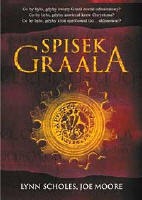 it sat for weeks. No signings or book tour or any communications from us. Nothing.
it sat for weeks. No signings or book tour or any communications from us. Nothing.
Over the years, our books have been translated into 24 languages including Chinese, Russian, Greek and Thai, even Serbian. The majority of the foreign publishers have bought all our books. Almost half were hardcover deals. Many were later republished in paperback. Our foreign royalties have far exceeded all our domestic sales many times over. All done with no book signings. No tours. No communications with these publishers. How can you have a bestselling novel with no personal author involvement? I believe it’s starting with a good book combined with aggressive, savvy publishers who know how to market to their audience.
So, are signings useful? Should writers conduct book tours? Are the publisher’s marketing efforts important? I can only speak for myself, but my answers are, probably not much, no, and definitely yes.
What do you guys think. Do you tour? Do book signings work for you? Does your publisher do a decent job of promoting your books?
———————-
THE PHOENIX APOSTLES is “awesome.” – Library Journal. Visit the Sholes & Moore Amazon Bookstore.
By Joe Moore
Last week, my publisher sent over the final cover design for my new thriller THE PHOENIX APOSTLES (written with Lynn Sholes) which is scheduled for release in June, 2011. 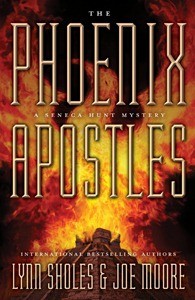 The title—the first one our publisher accepted with no change—refers to a group of followers of a religions cult that believes the only way to save the world from the predicted end of mankind is to appease the gods using the same technique as the Aztecs: human sacrifice. Or more specific, the ripping out of a human heart while the victim is still alive. Those are the “apostles” referred to in the title. The phoenix portion comes from the name of the group itself: The Phoenix Ministry, of which their logo is the mythical phoenix bird rising from its own ashes.
The title—the first one our publisher accepted with no change—refers to a group of followers of a religions cult that believes the only way to save the world from the predicted end of mankind is to appease the gods using the same technique as the Aztecs: human sacrifice. Or more specific, the ripping out of a human heart while the victim is still alive. Those are the “apostles” referred to in the title. The phoenix portion comes from the name of the group itself: The Phoenix Ministry, of which their logo is the mythical phoenix bird rising from its own ashes.
The cover consists of two main elements: the phoenix bird aflame shooting out of an Aztec pyramid, both of which go along with the plot of the story.
Although the back cover text has not been finalized, here’s the gist of the what it will say.
THE PHOENIX APOSTLES (coming June, 2011)
At a dig site in Mexico City, magazine journalist Seneca Hunt is reporting on the opening of Montezuma’s tomb when it’s discovered that the remains of the Aztec emperor are missing. Before she can investigate further, what appears to be a terrorist attack kills the dig team including her fiancé. Seneca barely escapes the carnage not knowing that a passing glimpse of an out-of-place object in the tomb may have sealed her fate. She soon learns that someone is stealing the burial remains of the most infamous mass murderers in history. Seeing a story in the making, her research uncovers a plot to slaughter millions in the name of an ancient cult. Seneca teams up with a bestselling novelist to prove the threat really exists while staying one step ahead of those who want her dead. As time is running out, she must follow a 2000-year-old trail leading back to the death of Jesus Christ.
Some of my fellow thriller authors were kind and generous enough to take the time to read THE PHOENIX APOSTLES and send me a blurb. Here are four:
"Bold, taut, and masterfully told."
— James Rollins, New York Times bestselling author of THE DOOMSDAY KEY"A fascinating, compelling page-turner."
— Carla Neggers, New York Times bestselling author of COLD DAWN"A knockout apocalyptic thriller!"
— Douglas Preston, New York Times bestselling author of IMPACT and THE MONSTER OF FLORENCE"A rollicking thrill ride!"
— Tess Gerritsen, New York Times bestselling author of ICE COLD
You can read their complete quotes by clicking here.
So now that you’ve seen the cover and know a little bit about the story, would it grab your attention if you saw it in your favorite bookstore? Would it make you want to read the book? Please be honest and share your opinion. Thanks.
Last week, Lynn Sholes and I completed our fifth novel together. The working title is THE PHOENIX APOSTLES. Let me tell you, collaboration is tough, but collaborating on fiction is insane. Somehow we manage to pull it off—at least our books get published. I think that’s a good sign. All our previous books dealt with complex plots, but our newest thriller is the most complex so far.
Here’s the premise: A journalist discovers that someone is stealing the burial remains of the most heinous mass murderers in history. She uncovers a plot involving the human sacrifice of thousands in the name of an ancient cult. As her life becomes threatened because of what she knows, she learns that the only way to stop the threat is to find and destroy an obscure religious relic dating back to the time of Christ.
As you can guess, this is not a lighthearted cozy. We’re talking high concept, high stakes thriller.
So now Lynn and I are into the rewriting phase of the book. This is a two-part process. First, there’s the line editing; catching all the typoz, grammer and punktuasion issues. The second part of the process is dealing with plotting problems. And the more complex the plot, the more chances there are for holes. We’ve all heard of the phrase, “painting yourself into a corner”. At last count, we’ve managed to do that at least 5 times in this book. But here’s where collaboration comes to the rescue.
Lynn and I have a favorite phrase for when we’re in big trouble. “Houston, we have a problem.” During the rewrite of this new one, we’ve said it too many times. But because there are two minds at work here—some may argue two damaged minds—we’ve been able to brainstorm our way out of every corner so far. Now, mind you, it wasn’t easy. It took many hours of conference calls to resolve huge holes discovered in the rewrite process. One in particular was a deal breaker—literally if we didn’t solve it, the book would collapse under its own weight. But through persistence and the liberal use of “what if”, we waited in the corner until the paint dried, and then we walked out of the room.
So, how do you handle it? What do you do when you find yourself in that lonely corner and you realize your book is sinking like the Titanic? Who do you turn to? Do you have a sounding board? Your spouse? A fellow writer? A trusted beta reader? Or is it all up to you alone? How do you work yourself out of that proverbial corner?
By Joe Moore
It’s going to be a short post today because there’s little time to spare. Like any great thriller, the clock is ticking. My co-author Lynn Sholes and I are in a death match with none other than Dan-da-Vinci-Code-Brown. And we’re determined to win.
Don’t get me wrong, I like Dan Brown. At least I like his books.  I’ve never actually met him, but I’m sure he’s a great guy you’d want to have a beer with. But today there’s something called the May Madness Thriller Author Smackdown over at a website/blog called Megalith. So a potential Brown-Sholes-Moore warm & fuzzy beer fest is not in the cards right now. This is serious smackdown stuff.
I’ve never actually met him, but I’m sure he’s a great guy you’d want to have a beer with. But today there’s something called the May Madness Thriller Author Smackdown over at a website/blog called Megalith. So a potential Brown-Sholes-Moore warm & fuzzy beer fest is not in the cards right now. This is serious smackdown stuff.
Each day of this month, the Megalith blog is matching up two thriller authors (or teams) to go head to head. The final round and championship will be on May 31. But today, we need your votes.
I mean, when you get right down to it, aside from a small difference of 80 million or so copies in sales, just like Dan’s, our thrillers have secret societies, ancient religious relics, angels and demons, globe-trotting heroes and villains, secret codes, seat-of-the-pants action, inside the Vatican cool stuff, creepy tunnels, dusty tombs, scary castles, and apocalyptic threats galore.
So call your family and friends, use names off headstones and the Chicago voter rolls—whatever it takes. Just get over to Megalith blog and vote. It’s a smackdown, and the future of the thriller world is in your hands.
~~~~~~~~~~~~~~~~~~
Coming up on our Kill Zone Guest Sundays, watch for blogs from Sandra Brown, Steve Berry, Robert Liparulo, Thomas B. Sawyer, Paul Kemprecos, Linda Fairstein, Oline Cogdill and more.
by Joe Moore
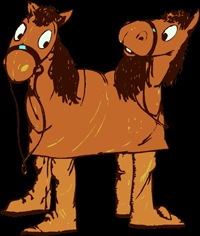 One of the most frequently asked questions Lynn Sholes and I get is “How is it possible for two people to write fiction together?” The answer is, it ain’t easy. At least it wasn’t at first. Collaboration on non-fiction is somewhat easier to understand. In general, with non-fiction, the “facts” usually already exist and the collaborators’ job is to organize them into a readable document that has a beginning, middle and end. A good outline and knowledge of the subject matter along with professional writing skills may be all the authors need.
One of the most frequently asked questions Lynn Sholes and I get is “How is it possible for two people to write fiction together?” The answer is, it ain’t easy. At least it wasn’t at first. Collaboration on non-fiction is somewhat easier to understand. In general, with non-fiction, the “facts” usually already exist and the collaborators’ job is to organize them into a readable document that has a beginning, middle and end. A good outline and knowledge of the subject matter along with professional writing skills may be all the authors need.
But with fiction, nothing exists. It’s all smoke and mirrors (a great title of a great thriller by my fellow KillZone blogger, John Ramsey Miller, by the way). Fiction is a product of an individual’s imagination. It might be inspired by actual facts or events, but only the individual has a specific vision of those events in their head. So how can two people have a similar enough vision to be able to write a novel?
I can’t speak for the handful of other writing teams out there, but Lynn and I have managed to complete 4 thrillers together because of a number of reasons. First, we love the same kind of books—the ones we read are like the ones we write. Second, we have an unquestioning respect for each other’s writing skills and a deep belief that whatever one of us writes, the other can improve. Third, we believe that there’s always a better way to write something. Fourth, we never let our egos get in the way of a good story. This comes from spending over 10 years in a weekly writers critique group. Fifth, we know each other’s strengths and weaknesses, and are willing to admit them. Sixth, we agree on the same message in each book. Seventh, we believe that we are on the same level of expertise. And last, we believe that the whole is greater than the sum of the parts.
Those points cover the mental portion. Now, how do we handle the mechanics of the job. We talk, and talk, and talk. At least once a day we conference call, brainstorming and telling and retelling each other the story. Our two favorite words are: What if? Whether it’s global plot points or an individual scene or character motivation, we keep telling each other the story until that little imaginary movie in our minds becomes as in sync as possible. Then one of us will declare they have a “handle” on the scene or character or chapter, and create the first draft.
We write very slowly because each chapter must go back and forth many times for revision. Years ago, when we first started, everyone could tell who wrote what as we tried to write our first book. It took three years of hard work before we melted our voices together. Now, because the process goes through so many revisions, even I can’t always remember what I wrote and what she wrote. I rely on my co-writer so much that I’ve come to wonder how individuals can possibly write a book on their own.
There are a number of advantages and disadvantages to collaborating. A disadvantage is that you split any money you make. So you’ll always make half of what you could as a single author. And like any relationship, there is always a chance of a falling out. And something could happen where an ego can become inflated and affect the process.
One of the pluses is that we never experience writer’s block. One of us will always have an idea on how to get out of a jam or move the story forward. And unlike our family, friends, trusted beta readers, and everyone else, a co-writer has an intimate, vested interest in the success of the story that no one else could have.
Lynn and I are approaching the mid-point of our fifth thriller together. I’ve found that creating the first draft of a chapter is just as exciting as getting a new chapter from her and seeing where the story has gone. I guess the whole thing boils down to trust. Trust in each other and in the goals we both want to achieve with the story and with our careers.
So, now that you know how we write together, do you think you could ever collaborate on a novel? Or is writing fiction too private an experience. Do you believe two heads are better than one or would you rather not have anyone sticking their nose in your work?
By Joe Moore
Book titles are critical. It’s that first impression when a potential reader glances down at the new fiction table in the local bookstore. And even if you’ve got a great title, you hope the publisher’s art department doesn’t somehow screw it up with the cover art. I’ve seen books with good titles that were almost impossible to read from a distance. And others where the design was so busy, it gave me a headache.
When Lynn Sholes and I decided to collaborate on our first book, we used CORPUS CHRISTI for the working title during the three years it took to write. Since it was a thriller about cloning Christ, we thought using the Latin for Body of Christ was cleaver. But when we sent it off to our agent, she pointed out the error of our ways. Could be a travel guide to a city in Texas. Could be a novelization of a Broadway play running at the same time. So we changed it to THE ENOCHIAN PROPHECY, a brilliant title that no one could pronounce or spell. Our publisher wisely changed it to THE GRAIL CONSPIRACY which has stuck in all the foreign translations except German.
Book 2 had the working title of THE THIRD SECRET. Steve Berry released a thriller by the same name so our agent changed the title to THE LAST SECRET. So far, it has worked for the foreign publishers that have translated it, although we haven’t seen the German version yet.
Book 3 had a working title of INDIGO RUBY for the year it took to write. The title had a great deal of meaning for at least two people: Lynn and myself. Again, the publisher stepped in and wisely renamed it THE HADES PROJECT which is exactly what the book is about. Clever.
BLACK NEEDLES was what we called number 4 which was the name we gave the deadly retrovirus that formed the threat of the book. Cool title, but it really didn’t tell the reader anything about the story. Could be a book about a knitting club for witches. So the publisher finally settled on THE 731 LEGACY. The book involves the Japanese WWII biological warfare division called Unit 731 and how its legacy propels the story. OK, we agree that was a wise decision and makes sense.
The working title to our next one is THE PHOENIX APOSTLES. We’ll see if that makes it to print.
Sometimes it’s better to leave the titles to the marketing and sales department and just stick to writing the story.
So why are titles important? Paul McCartney’s working title of the Beatles classic “Yesterday” was “Scrambled Eggs.”
Have all your working titles made it to the cover of your book? If not, were you happy with the final version?